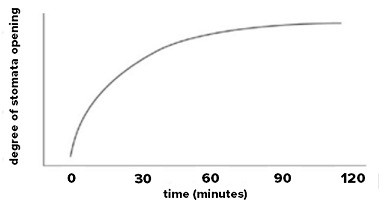Hypothesis I: A flavin pigment absorbs blue light; this pigment then activates the proton pump.Hypothesis II: When CO2 concentration rises, a membrane receptor inactivates the proton pump.Stomata opening after illumination following eight hours in darkness: plant is Xanthium pennsylvanicum.
A. Supports both hypothesis I and II.
B. Supports only hypothesis I.
C. Supports only hypothesis II.
D. Supports neither hypothesis.
Answer: A
You might also like to view...
Mutations that inhibit the function of photosystem I but not photosystem II would result in a plant cell that could still generate ______.
A. produce O2, ATP, and NADP+ B. produce ATP and NADP+ C. produce O2, ATP, and NADPH D. produce ATP and NADPH E. produce CO2 and ATP
Which of the following is not a product or reactant of glycolysis?
a. NADH b. ATP c. pyruvate d. oxygen
The reaction (H2 + F2 ? 2HF) is an example of a redox reaction. In reality, two half reactions are occurring. The half reaction (H2 ? 2H+ + 2e-) is a(n)
A. potential energy reaction. B. reduction reaction. C. redox reaction. D. oxidation reaction.
Which sensory modality responds to the broadest range of molecules?
A. Taste B. Smell C. Vision D. Touch E. TRP channels